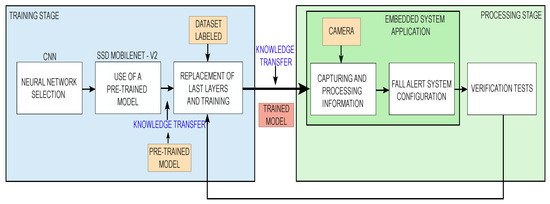Sensors, Vol. 24, Pages 5592: Low-cost Non-wearable Fall Detection System Implemented On A Single Board Computer For People In Need Of Care

Sensors, Vol. 24, Pages 5592: Low-Cost Non-Wearable Fall Detection System Implemented on a Single Board Computer for People in Need of Care
Sensors doi: 10.3390/s24175592
Authors: Vanessa Vargas Pablo Ramos Edwin A. Orbe Mireya Zapata Kevin Valencia-Aragón
This work aims at proposing an affordable, non-wearable system to detect falls of people in need of care. The proposal uses artificial vision based on deep learning techniques implemented on a Raspberry Pi4 4GB RAM with a High-Definition IR-CUT camera. The CNN architecture classifies detected people into five classes: fallen, crouching, sitting, standing, and lying down. When a fall is detected, the system sends an alert notification to mobile devices through the Telegram instant messaging platform. The system was evaluated considering real daily indoor activities under different conditions: outfit, lightning, and distance from camera. Results show a good trade-off between performance and cost of the system. Obtained performance metrics are: precision of 96.4%, specificity of 96.6%, accuracy of 94.8%, and sensitivity of 93.1%. Regarding privacy concerns, even though this system uses a camera, the video is not recorded or monitored by anyone, and pictures are only sent in case of fall detection. This work can contribute to reducing the fatal consequences of falls in people in need of care by providing them with prompt attention. Such a low-cost solution would be desirable, particularly in developing countries with limited or no medical alert systems and few resources.


